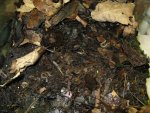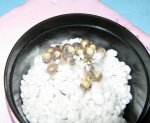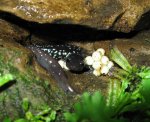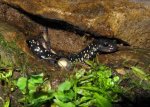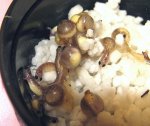taherman
Caudata.org Donor
It has been a pretty successful year with plethodontids at the Toledo Zoo where I amazingly get paid to take care of salamanders. We had 3 clutches of Hemidactylium eggs with 60+ metamorphs produced. A clutch of Desmognathus welteri eggs are around 2/3 of their way through development. And the best IMO is the 2 clutches of Plethodon glutinosus eggs that were laid in the past week on exhibit. Both mothers are attending and the eggs are developing nicely in full view of the public. If the egg counts drop I will probably remove some to raise on perlite via the Russ Cormack (tm) method.
Here's a few photos for you to enjoy.
-Tim
Here's a few photos for you to enjoy.
-Tim

